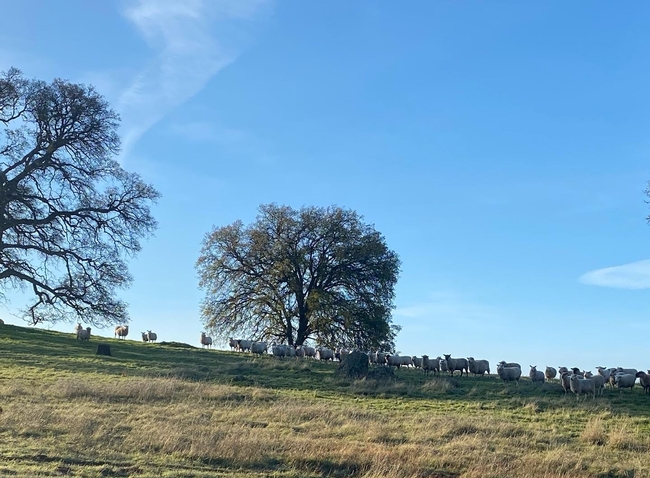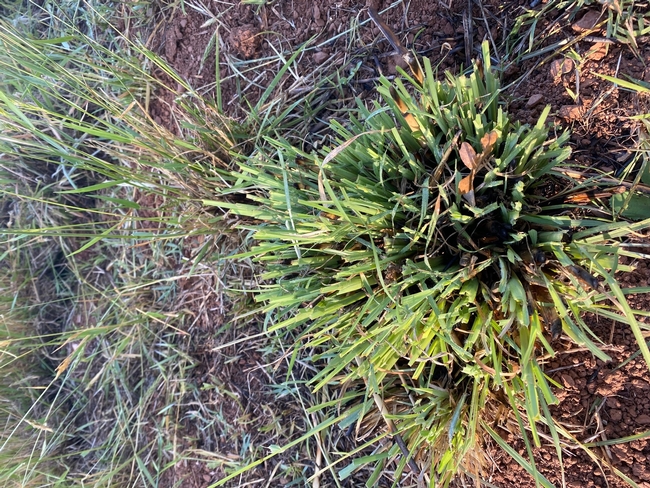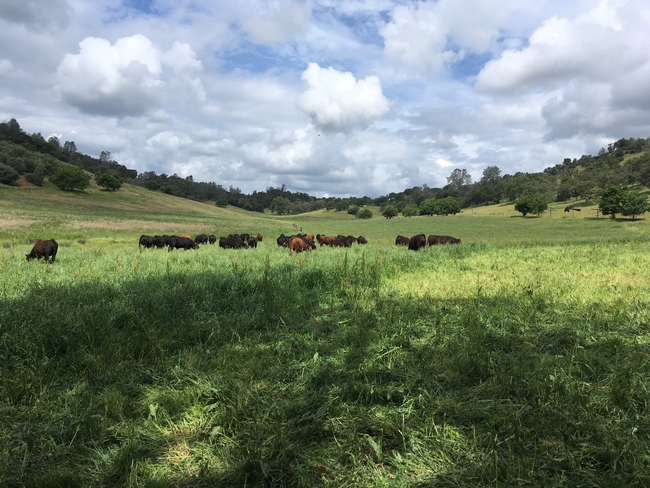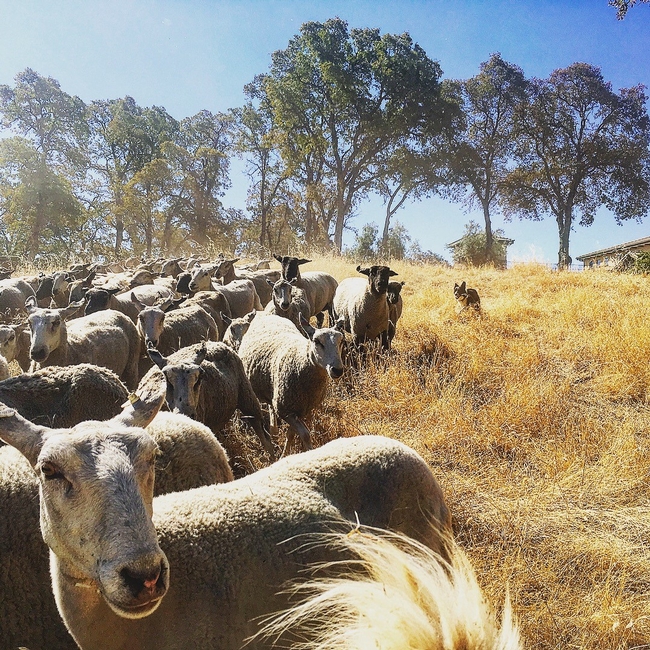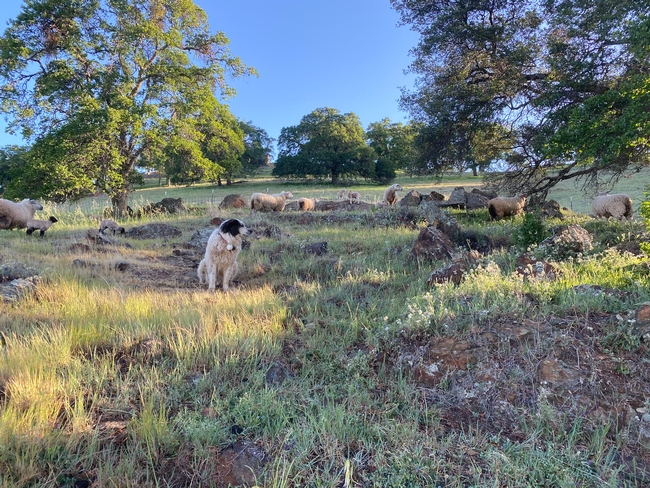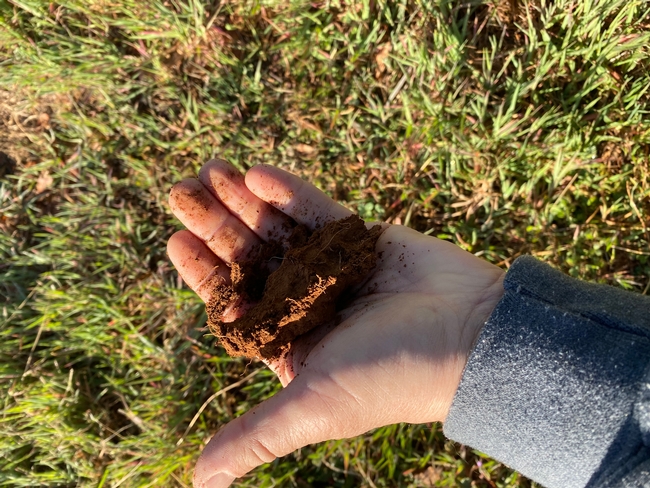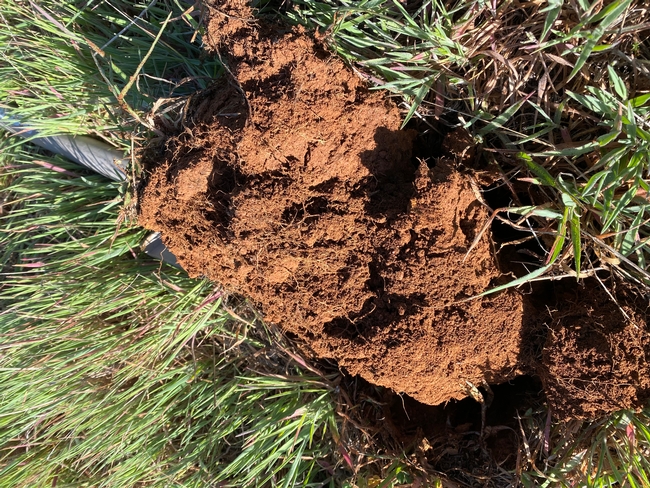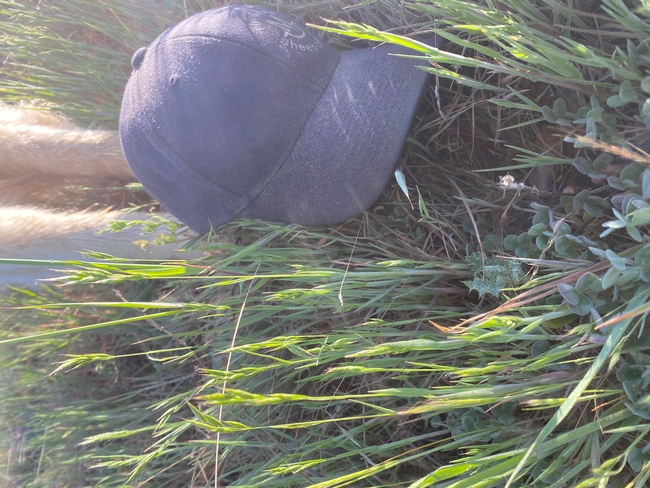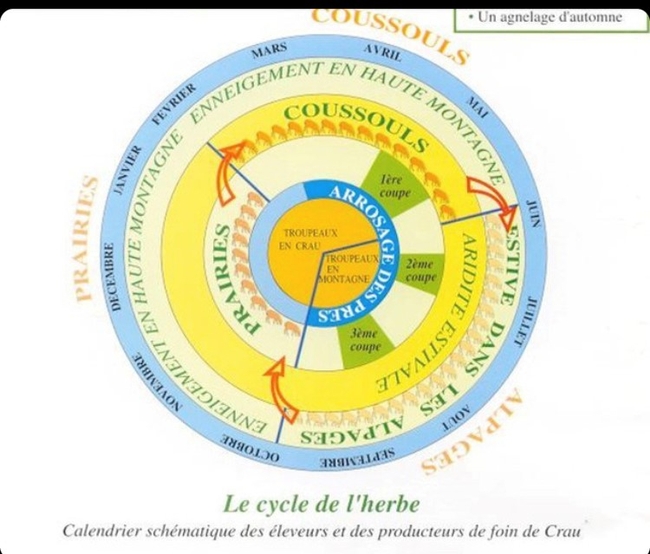- Author: Dan Macon
I suppose my obsession with the weather apps on my smartphone started during the 2013-2014 drought. I've always been a weather geek, but during that dry spell, I found myself constantly checking multiple apps to see if one held more hope for moisture than another. That fall, I was lambing out a large commercial flock of sheep in the California Delta. Later that winter, I went to work as the beef herdsman at UC's Sierra Foothill Research and Extension Center (SFREC). Grass - and the moisture to grow it - was never far from front of mind. And as a dry, cold December stretched into an even drier January, we reduced our sheep numbers (both on the outfit I was working for, and in our own flock). As the weather stayed dry that spring, we hunted every blade of grass we could find at SFREC. And looking at the plethora of weather apps that are still on my phone today, I find myself getting nervous about this fall and winter... again!
Based on that 2013-2014 experience, I've become much more focused on my grazing planning. For me, this involves multiple timeframes - I'm thinking about where our sheep will be able to graze over the next 3-4 weeks, as well as what our forage resources might look like into late January and February (during late gestation for our ewes). Beyond lambing, I start thinking about how much irrigated pasture we'll have available to us next summer. Based on this planning, I can adjust when and where we move the sheep in the short term. In the long term, I can adjust our flock size to make sure our forage demand balances with our forage supply.
Setting our stocking rate, then, becomes a critical part of our drought strategy. Do we stock for an "average" year (whatever that is)? Do we stock for a good year with the understanding that we'll need to sell animals if our grass doesn't come on? Or do we stock conservatively - for the worst years - and adjust by bringing in more animals if we're pleasantly surprised by rainfall and grass? My friend and colleague Josh Davy, who runs cows in the Sacramento Valley, says, "My starting point is to set my stocking rate so that I can survive December and January - those are the toughest months, feed-wise."
We can also affect our stocking rate simply through our management calendar. We try to matching our lambing period (which is also our period of highest forage demand) with the onset of rapid grass growth (usually in late February or early March). Most years, this works out - although the incredibly dry period we had in the first quarter of 2022 tested my resolve. This also allows us to reduce our stocking rate as the forage dries out in late spring and summer - by simply selling our lambs.
All of this brings me back to THIS fall and getting nervous. We had a germinating rain in mid September - and we've had no precipitation since here in Auburn. The grass that germinated after that first rain has stopped growing (and in some cases, died). Our irrigation water shut off on October 15, which means our irrigated pasture won't grow much more forage unless we get some rain. Last night, I mapped out our grazing for the next month - I think we'll have enough grass to stay on our irrigated pasture until the first weekend of December.
After that, we'll see where we are - if we get rain in the next 7-10 days (and there appears to be some in our forecast - depending on the app I'm looking at!), we'll have some green forage on our lower elevation annual rangelands by the time we move the sheep. If we don't get any rain, we'll need to provide supplemental protein to allow the ewes to digest the dry forage we saved as a buffer. At this point, I'm reluctant to sell any bred ewes - we've already invested in next year's lamb crop.
During last year's dry spell, Siskiyou County Livestock and Natural Resources Advisor, Grace Woodmansee and I developed a drought decision support tool to help ranchers think about their short- and long-term drought strategies. The core of this tool is a 12-month forage calendar - a tool to help you think about potential gaps in your forage supply through the course of the year. This year, I've found it helpful to revisit my forage projections on a regular basis - grass that seemed plentiful after last December suddenly looked short in mid-March. Similarly, what looked to be a dismal grass year in March turned around with April's storms. The process of planning - of looking ahead at our grass - helped make my decision-making process more rational. Had April remained dry, I would have sold sheep; since it turned wet, I was able to maintain my numbers. My forage calendar, in other words, allowed me to establish some realistic key dates for decision-making.
Now, if you'll excuse me, I need to check a few more weather apps - one of them is bound to have an optimistic forecast for next week!
- Author: Dan Macon
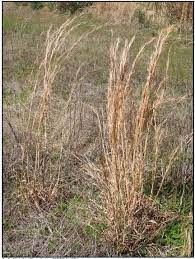
Our older ewes will graze it (some) early in the growing season, but by the time we get back to these pastures in the fall, the plants are too coarse to be palatable. As with most forage plants, palatability and nutrition seem to be related - as the plants become coarse, they also drop in nutritional value. And since the sheep don't graze it late in the year, it seems to be able to out-compete some of the more desirable species (which the sheep will eat).
Over the last decade, we've tried several different approaches. Early on, thinking that fertility was a key factor, we tried fertilizing with triple phosphate. We saw no difference between the areas we fertilized and those we didn't. One of our landlords tried mowing the broomsedge mid-season - which didn't seem to set it back at all, and which also didn't increase its palatability. In 2020 and 2021, I tried spot treating individual plants with glyphosate. These plants were still vegetative (that is, they hadn't flowered or produced seed yet), but in most cases, as the plant died from the herbicide, it seemed to go into hyperdrive and produce seeds. After the 2020 experiment, we didn't notice much difference from our spot spraying - we're still seeing broomsedge in our pastures.
In very early April, I decided to try another type of spot treatment - fire! Using a propane torch, I tried burning individual plants, as well as groups of plants where fire would carry. Broomsedge seems to be more of a warm-season perennial here, so it really hadn't started growing yet.
Obviously, this spring has been atypical, weather-wise (although over the last decade, I'd be hard-pressed to say what "typical" weather is). After I burned the broomsedge, we received more than four inches of rain (more than we measured for January through March 2022). Additionally, we started irrigating in mid-April. Not surprisingly, the burned broomsedge started to grow - sending up new tillers within a week or two of my burning.
Fast-forward to the last two weeks. We finally got the sheep onto the parts of the pasture I'd burned. And they absolutely LOVED the fresh growth on the broomsedge - they selectively grazed the plants that I'd treated (and ignored the decadent plants that I didn't burn). The next step will be to see if these plants stay palatable following our typical rest period (which is usually 35-40 days during this time of year).
By some definitions, a weed is simply a plant that is growing where we don't want it to grow. A weed, in a pasture setting, is a plant that takes up water, nutrients, and sunlight, at the expense of plants that may have greater nutritional value or more palatability. In that sense, broomsedge is definitely a weed - it's growing where I might otherwise be able to grow orchardgrass or clover. But what if I can figure out a cost-effective way to keep it palatable longer into the grazing season? What if I can get the sheep to eat it? Maybe a "weed" is in the eye of the beholder! Stay tuned - I'll provide an update on my observations as we make a second pass through this pasture!
In the meantime, here's a link to some USDA information on broomsedge.
- Author: Dan Macon
Register now for the Sierra Foothills Cattle & Sheep Grazing School!
If you look back far enough in the histories of most foothill cattle operations, you'll find... SHEEP! Believe it or not, many long-time cattle operations also had sheep at one time. And today, there's increased interest in using multi-species grazing as a risk management and diversification tool!
If you're interested in learning more about managing both sheep and cattle on rangeland or pasture, sign up for the Sierra Foothills Cattle & Sheep Grazing School, July 14-15, 2022, in Auburn, California! This two-day school will include information - and hands-on experience - in grazing planning, estimating carrying capacity, fencing systems, stockmanship and husbandry practices, cattle and sheep nutrition, and economics! Our instructors include Dan Macon (UCCE Livestock and Natural Resources Advisor), Joe Fischer (Bruin Ranch), and Ryan Mahoney (R. Emigh Livestock). Every student will have an opportunity to graze both sheep and cattle!
Tuition for the 2-day program is $200, which includes meals and course materials. Producer scholarships are available through Sierra Harvest.
For more information, contact me at dmacon@ucanr.edu or (530) 889-7385. Let's get out there and graze!
- Author: Dan Macon
I invite you to travel back in time with me - clear back to late October 2021! We'd measured more than 10 inches of rain in Auburn, and we could see the first green shoots of grass emerging through the dry forage. While November was slightly disappointing from a precipitation perspective, we measured more than 12 inches of rain in December - capped off by a crazy, wet, and cold storm just before the first of the year. I'm sure most of us were celebrating what looked like a great feed year when we rang in 2022. But then the spigot shut off - here in Auburn, we've measured just 1.77 inches of rain since January 1 - the driest start to the calendar year in the 20+ years I've kept records. Combining this lack of moisture with warmer-than-normal temperatures and unusual (at least for winter) dry north wind, we are squarely back in drought conditions. In many ways, we seem to be experiencing a more severe drought than last year, at least on our foothill annual rangelands.
Ranchers know that drought is more than just a lack of precipitation. Low rainfall years, provided the storms come at the right time, can produce above-average forage. This year, however, the warm temperatures have brought oaks and other vegetation out of dormancy earlier than normal - this early onset of the growing season in our oak woodlands has increasedevapotranspiration (or soil-water demand). The north winds haven't helped. Before we received an inch of rain on March 14-15, I checked soil moisture in Auburn - and found it to be less than 20% (more like May than March). The rain gave us a short boost, but by the end of last week, soil moisture was back around 25%.
Ourrangeland vegetation reflects these poor growing conditions. Our annual grasses andforbs, by definition, must produce seed every year. In dry conditions, this means that they reproduce and turn brown early and at a shorter stature. Where our sheep are grazing just west of Auburn, I've seen soft chess and annualryegrass headed out this week - a good 30 days early. In a good year, the soft chess will be as much as 18 inches tall; this year, it's done growing at 6 inches. Many of our importantbroadleaf forage plants are maturing equally early - I'm seeing vetch dying back on our shallower soils, and thefilaree is already in the late bloom stage, as well.
These are all red flags from a forage quantity perspective - shorter feed this spring means less residual feed to return to next fall. But early maturity also compresses our forage quality window. Many of us expect a 45-60 day period when we have high quality forage on our annual rangelands - and we set our production calendars accordingly. As these grasses and forbs mature, they decline in quality - providing less protein and energy to our grazing animals. They also become less palatable - in other words, they don't taste as good and they don't provide as much nutrition. The graph below demonstrates that crude protein levels in annual grasses drop below cow maintenance levels between the late flowering and maintenance stages (which we're approaching). If we're trying to put weight on animals, protein levels are deficient by the time we reach the early flowering stage. For more information, check out this ANR Publication (Annual Rangeland Forage Quality).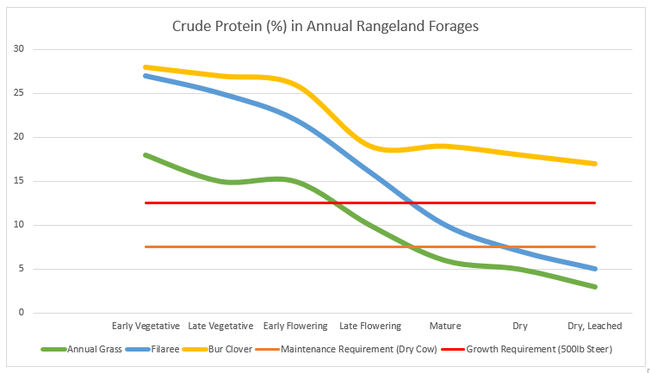
We're still hopeful that the significant snow pack we built up in December will mean we'll have adequate irrigation water here in the foothills - other regions in the state aren't so fortunate. Given the exceptionally dry conditions, however, I expect we'll need to make at least 2 irrigation rotations over our irrigated pastures to rebuild soil moisture and start growing forage. For us, this means we won't start regrowing irrigated pasture forage following our first graze periods until the end of May.
In light of these impacts, what are some of the strategies we should consider going forward? The basic premise of most drought management strategies is to increase our forage supply (by buying hay or other feed, irrigated early, or leasing new pasture) or reducing our forage demand (by selling livestock or weaning early). Check out our Drought Decision Making Tool for Ranchers for information on how to analyze the economics of these options! This page also includes a new bulletin on early weaning.
As far along as our annual rangeland vegetation is today, another rain won't do us much good - other than perhaps grow some summer annual weeds that may have some grazing value. Rain wouldgive our irrigated pastures a boost, however - at least here in the foothills. We'll see what April brings!
- Author: Dan Macon
Like many of you, I expect, I've recently debated whether to keep my social media accounts - Twitter, Facebook, and Instagram sometimes seem like a bottomless pit of advertising and argument. But then something like this happens....
Last week, I wrote about the idea of an "ecological calendar" - a way to think about our production calendars from an ecological perspective (read the post here). I included my first rather awkward attempt at graphically displaying my own sheep production calendar - and shared the graphic on Instagram.
Within several hours, I had the most wonderful response from someone who listens to our Sheep Stuff Ewe Should Know podcast - complete with an actual, real-world ecological calendar from a famous sheep-producing region in France! Yeva (@why_suarez on Instagram) shared this:
"The inner orange circle says “troupeau en montage” (herd in the mountains) and troupeau en crau (the Crau is a geographical area). Most sheep farmers in the south of France move their sheep to the mountain areas (like Haute Savoie, the mountains between Italy and France. Pyrenees is another system yet again) as there's not enough green pastures available, because of the high temperatures that dry out the land and/or because the irrigated areas are used to produce hay (there are more reasons, but that's the short version!). Wolves are a big issue, they will be guarded by a shepherd throughout the summer. But back to the calendar.
"You see two blue lines pass through all the circles, one: mid-June; one: beginning of October. That's when the sheep are away, which matches with the outer circle that says “estives dans les alpages.” Estives means summer pasture. Most of the sheep will be taken there, represented in the tiny sheep symbols. Outside that period is says in the circle “enneigement en montagne,” which is basically snow in the mountains!
"The arrows show the movement of the sheep to the different kind of pastures. In the Crau, you basically have two kinds, the green one that is irrigated and produces the hay and the dry one or the “Coussouls” that have a very specific kind of biodiversity and is known for its many rocks.
"It's a bit complicated to explain because it's a circular system, so it's all linked – which also makes it very cool, because the entire calendar is pasture and hay based, including lambing dates, etc. But basically, Foins de Crau is a very famous hay that's produced with a complicated irrigation system and is subject to many rules if it wants to qualify as “foins de crau,” as it's known for its very high quality. They cut it three times a year (in the calendar it says “1ere coupe = first cut, etc.). Each “cut” has a different nutritional component and is marketed differently. The fourth cut is not actually cut; it is eaten by the sheep when they return from the mountains. That's why you see the sheep symbols between October and February in the same circle as the “cuts” – we call those kinds of pastures the “prairies.”
"Half February (the blue line only overlaps the prairies and coussouls) they are then moved to the coussouls. The prairies will start growing again for the first foins de crau cut and the cassouls offer enough food. Some other shepherds bring sheep to hill areas nearby instead of the coussouls – it tends to depend on the particularities of that farm. The amount of sheep symbols has grown in the cassouls circle, because the herds tend to be much bigger as this calendar reflects an autumn lambing period, which is the overall tendency here.
"Outside the inner circle is a smaller blue one that shows when the prairies are irrigated with water and when not (“arrossage de pres”). The specific timing of the movement of the herds would be a much longer story! But I hope the different layers of the calendar are clearer now and why they are linked."
I shared this calendar explanation with my friend Dr. Hailey Wilmer, who is the Research Rangeland Management Specialist at the U.S. Range Sheep Production Efficiency Research Unit, in Dubois, Idaho. Her observation was that "calendars can help tell stories across landscapes." I agree - looking at the calendar Yeva shared, and the explanation she provided, helped me look again at my own calendar. I asked myself these questions:
- What is the heart of our sheep operation in terms of nutrition and forage? For us, I think, it's the annual rangeland we use in the winter and again in summer.
- What is the second most important forage resource? In our case, it's our irrigated pasture. Pasture is more productive - and also more costly. With sheep, we could probably figure out how to get along without it.
- Finally, how do our production needs (vaccinations, shearing, lambing, etc.) fit within these underlying forage cycles?
All of this brings me to a question for you! How does your production system fit the ecological cycles in your region? I hope you'll share! And I guess I'll keep my social media accounts for now....


